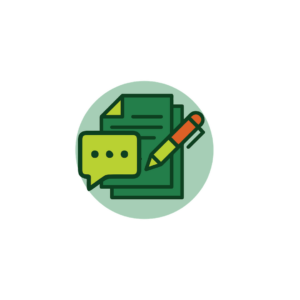HOW TO BECOME
CAREER READY
WITH LINKEDIN LEARNING
In support of on-campus employment, this is a guide to developing
transferable skills within our 10 career competencies
- How to activate your LinkedIn Learning account
- If you’re new to LinkedIn Learning, this How to Use LinkedIn Learning course is a great place to start. Happy learning!
CAREER DEVELOPMENT
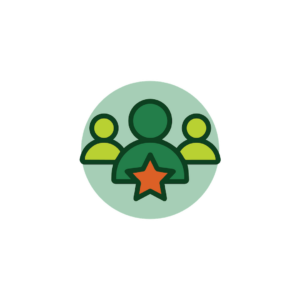
Access information and opportunities for career exploration. Understand and articulate the importance of transferable skills in the job search process.
This course provides information about how to create long term and short-term goals related to your career and how to create short-term goals that feed into your long term goals.
- What is a short-term goal related to your future career?
- What is a short-term goal related to your future career?
In this course, author and career coach Valerie Sutton answers common questions about career development.
- What is the difference between a career coach and a career counselor?
- When should you use a career counselor vs a career coach?
This course will walk viewers through ways to develop their career plan and how to use it.
- What is a career goal you can use to help develop your career plan?
- What is one way you can prepare for an interview?
This course will provide tips that can help you refine your approach and become a master networker.
- Why is the old way of networking wrong?
- How do you follow up on a networking connection to further the relationship?
CREATIVITY
Access information and opportunities for career exploration. Understand and articulate the importance of transferable skills in the job search process.
This course provides information about how to create long term and short-term goals related to your career and how to create short-term goals that feed into your long term goals.
- How would you define creativity?
- What are the 4 P’s of creativity?
This course explains the difference between creativity, innovation, and performance and how creativity and innovation play into improved performance.
- How would you define innovation?
- How can creativity and innovation improve your performance?
This course will provide views with prompts and fun, active ways to create new ideas and honor the process of developing original ideas.
- What is one exercise you can do to improve your creative thinking?
- What is one way you can let go of perfection?
This course provides behaviors and techniques to help viewers develop their creativity and apply it to their everyday lives.
- What is one barrier to creativity that you may face?
- What is the attribute dependency theory?
This course will cover many different techniques to spark creative inspiration to generate ideas.
- What is one way you can focus on your strengths more?
- What are the steps in transforming stress?
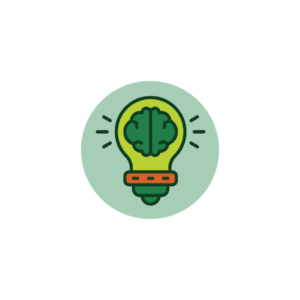
CRITICAL THINKING & PROBLEM SOLVING
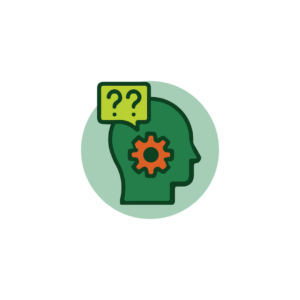
Identify important problems and questions. Gather, analyze, and evaluate information from diverse sources before forming a strategy, decision, or opinion.
This video provides viewers with three steps they can take to become more adaptable and improve their critical thinking skills.
- How would you define critical thinking?
- What are three steps you can take to improve your critical thinking?
This course includes short videos that will provide viewers with information about what critical thinking is and how to improve their critical thinking and problem solving.
- What are some models you can use to solve simple problems?
- How can you avoid logical fallacies?
In this course, author and career coach Valerie Sutton answers common questions about career development.
- What are the three components of critical thinking?
- What is the difference between intellectual and emotional empathy?
This course provides exercises and activities along with informational videos to help students develop their problem solving.
- What is one exercise you can use to generate possible solutions?
- What are the four simple rules for decision making?
DIGITAL PROFICIENCY
Use technology to communicate, problem-solve, and complete tasks in a responsible manner.
The author of this course provides viewers with tips to help you get more out of note taking and learning how to take notes to help with productivity.
- What is one tip to get the most out of your note taking?
- How can you apply productive note talking to your life?
This video walks through five tips to help viewers become more tech savvy.
- What are the 5 tips to help you become tech savvy?
- How can you apply one of the tips to your own life?
This course provides a general introduction to what Office has to offer by going over the different versions of Office, as well as how to tell which version you’re using.
- What is something new you learned about Microsoft Office?
- What Microsoft Office programs do you use in your on-campus position?
- What new program are you interested in using?
This course will provide many different tips and instructions on how to get the most out of Microsoft Word.
- What is something new you learned about Word?
- How do you add a Word count onto your document?
- How do you format text into a table?
This course offers quick and condensed tips to help you get familiar with Excel.
- What is something new you learned about Excel?
- How do you sum rows?
- How do you copy and paste cell formatting?

GLOBAL CONTEXT

Demonstrate an understanding of diverse people, cultures, and systems. Understand actions have local and global implications for the future.
This video will offer a few quick tips to help improve communication between people who come from different backgrounds.
- What is one of the tips to improve communication?
- How can you apply one of these tips to your daily life?
This video provides definitions for diversity and inclusion as well as outlines the differences between diversity and inclusion.
- How does this video define diversity?
- How does this video define inclusion?
- How would you define diversity and inclusion?
This course will demonstrate simple techniques to build your cross-cultural communication skills: as a manager, peer, or coworker.
- How can you overcome cultural bias?
- How can you adapt to another’s communications style?
This course explains key terminology and the business case for diversity, then dives into best practices for diversity, inclusion, belonging, and equity.
- What is inclusive communication?
- Why does belonging matter?
This course will teach you what comprises a generation, how each differs, and how intergenerational collaboration can create successful outcomes as well as provide tips on identifying the work styles and qualities offered by each unique group.
- What is multigenerational diversity?
- How can you move past bias and stereotyping?
This course will help you gain a better understanding of what it is, shows you some of its benefits, and offers some practical advice on fostering equity.
- What is the difference between equity and equality?
- How does equity benefit everyone?
INCLUSIVE TEAMWORK
Join with individuals and teams from diverse backgrounds to pursue a common goal. Often requires negotiating and managing conflict.
This course demonstrates ways to create intentional connections with team members in order to create a stronger team overall.
- What are ways to encourage team participation in a meeting?
- How can you be intentional with your connections with individual team members?
This course outlines the skills needed to be a valuable member of a team through connection, collaboration, and trust.
- What are the four engagement styles?
- What makes for effective feedback?
This course will outline the best ways to improve and encourage collaboration within a team.
- Why is it important to create connections in the workplace?
- What is clean escalation?
This video discusses ways to have meaningful conversations in the workplace while fostering a safe and inclusive environment.
- What are the four E’s of the winners group four E model?
- What are some ways that you can self-reflect before entering a difficult conversation with a team member?
This course describes way to approach working in situations with people who may be frustrating or difficult to work with.
- If you struggle to work with someone, how do you approach the situation?
- What are effective methods of dealing with difficult people?
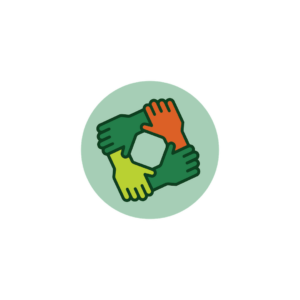
LEADERSHIP
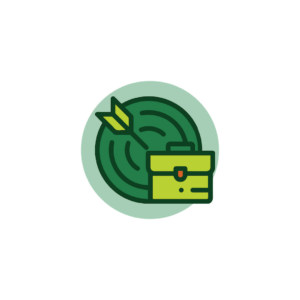
Situational judgement and informed risk taking. Resiliency to challenges. Motivate and encourage participation to work towards a shared purpose and vision.
This course outlines different leadership styles to inspire and empower others.
- What is Ken Blanchard’s Situational model?
- How can you use different leadership styles for different situations?
This course allows you to reflect on your character to improve your leadership skills.
- How do character and expertise influence leadership?
- How does communication fit into effective leadership?
This course describes the essential leadership abilities that you can practice to become a better leader while being your authentic self.
- How does transparency influence leadership?
- How does leading by example benefit a team?
This course provides support to intentionally lead a team from the middle of an organization.
- How can having personal development goals make you a better leader?
- How can you listen more strategically to be a better leader?
This course outlines how boosting a leader’s emotional quotient can positively influence a team.
- What is emotional intelligence?
- How does passion influence your ability to be a better leader?
PERSONAL ACCOUNTABILITY
Demonstrate integrity, honesty, dependability, responsibility. Accepts guidance and develops effective work habits.
This course discusses the crucial differences between accountability and responsible.
- How can you evaluate your own performance?
- How can distraction influence your personal accountability?
Learn how to take full responsibility for things in your life to set yourself up for success.
- How can you use personal accountability in your life?
- What are ways to effectively reflect on your growth?
This course outlines ways to hold yourself accountable in your daily life.
- What is the difference between responsibility and accountability?
- What are valuable ways of embracing accountability?
This course discusses methods to internally motivate to grow and develop.
- How can you highlight your accomplishments?
- What are methods of rebounding after an instance of failure?
Kofman discusses ways to hold your team accountable which, in turn, will help you hold yourself accountable.
- What are some legitimate responses to requests?
- How can you use the second yes to gain commitments?

SELF-REFLECTION
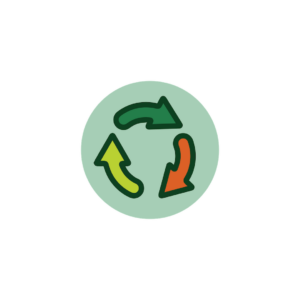
Evaluate, understand, and communicate personal skills and abilities. Learns from past mistakes through feedback to become more flexible and gain new insights and understandings.
This video aims to help you reflect in order to improve your self-awareness.
- How can you track your self-reflection progress?
- How do you plan to make time for self-reflection?
This course outlines why self-reflection is important to live a more meaningful life.
- Why is it valuable to pause and reflect?
- How does reflection influence happiness and productivity?
This course describes ways of weaving your personal values into your career.
- How can you use feedback while self-reflecting?
- How does a commitment to growth benefit your ability to self-reflect?
This course discusses ways to use self-reflection to grow and develop.
- What are some of the key questions that illuminate personal insight?
- How can being present influence self-reflection?
This course empowers you to develop a career that you love and feel challenged by.
- What is an RBG and why is it different from an everyday goal?
- How can learning to say “no” influence your professional development?
VERBAL & WRITTEN COMMUNICATION
Respond to needs of diverse audiences through flexible writing and speaking methods. Develop ideas through written and oral forms of expression.
This course discusses ways to boost your confidence when communicating.
- How can you identify a need or a challenge?
- What are the three ways to handle difficult questions?
This course describes the important skills that are vital for communication: self-awareness, trust, and patience.
- What are the three elements of presence?
- How does trust influence effective communication?
This course outlines ways that confidence can improve communication and clarity.
- How can advancing curiosity benefit communication?
- What are the important ways to avoid stifling critical thinking in a group?
This course discusses methods of improving your emotional intelligence in order to communicate effectively.
- How can emotional intelligence benefit your communication skills?
- What are some ways that you can communicate confidently?
